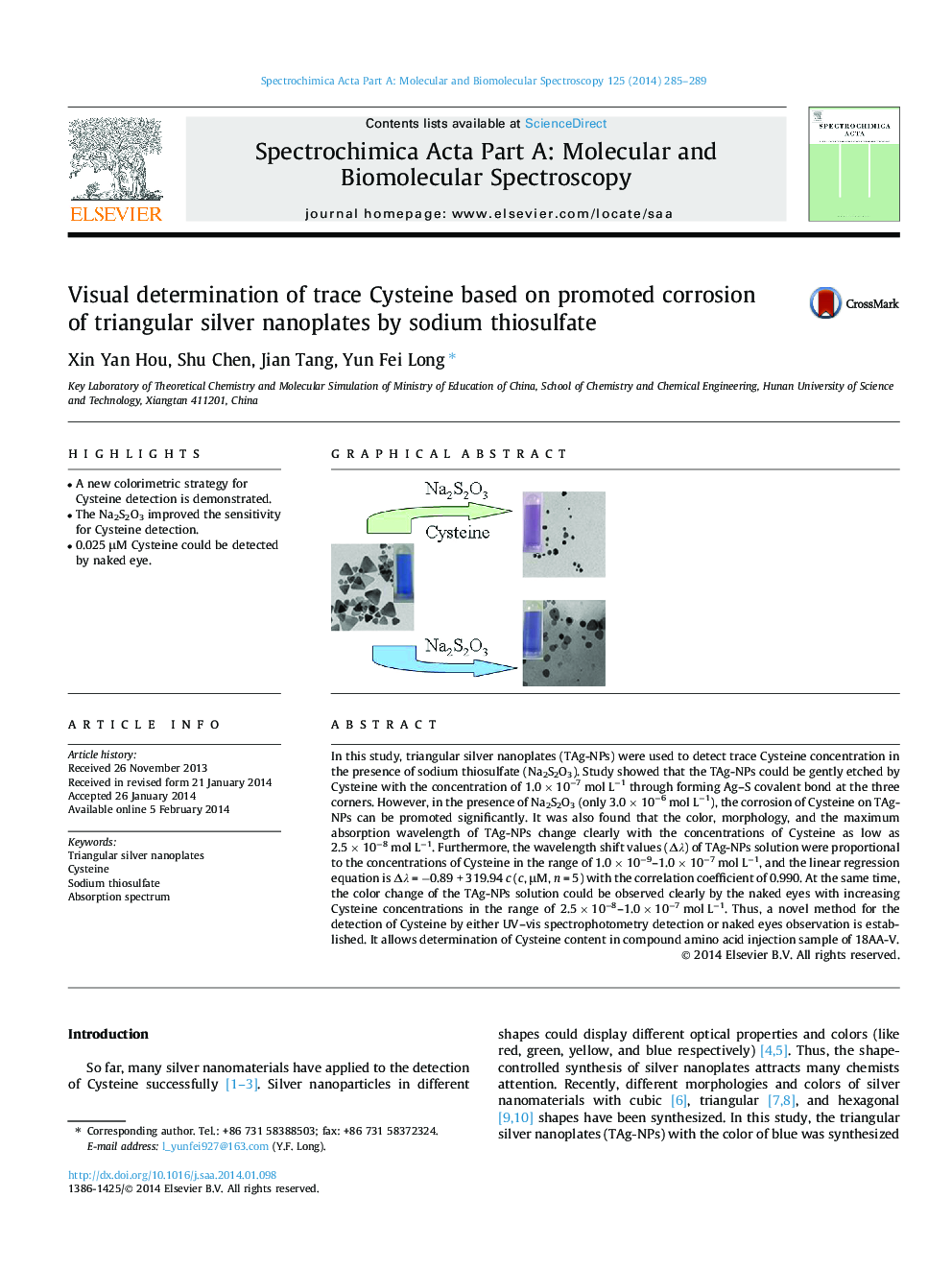| Article ID | Journal | Published Year | Pages | File Type |
|---|---|---|---|---|
| 1230181 | Spectrochimica Acta Part A: Molecular and Biomolecular Spectroscopy | 2014 | 5 Pages |
•A new colorimetric strategy for Cysteine detection is demonstrated.•The Na2S2O3 improved the sensitivity for Cysteine detection.•0.025 μM Cysteine could be detected by naked eye.
In this study, triangular silver nanoplates (TAg-NPs) were used to detect trace Cysteine concentration in the presence of sodium thiosulfate (Na2S2O3). Study showed that the TAg-NPs could be gently etched by Cysteine with the concentration of 1.0 × 10−7 mol L−1 through forming Ag–S covalent bond at the three corners. However, in the presence of Na2S2O3 (only 3.0 × 10−6 mol L−1), the corrosion of Cysteine on TAg-NPs can be promoted significantly. It was also found that the color, morphology, and the maximum absorption wavelength of TAg-NPs change clearly with the concentrations of Cysteine as low as 2.5 × 10−8 mol L−1. Furthermore, the wavelength shift values (Δλ) of TAg-NPs solution were proportional to the concentrations of Cysteine in the range of 1.0 × 10−9–1.0 × 10−7 mol L−1, and the linear regression equation is Δλ = −0.89 + 319.94 c (c, μM, n = 5) with the correlation coefficient of 0.990. At the same time, the color change of the TAg-NPs solution could be observed clearly by the naked eyes with increasing Cysteine concentrations in the range of 2.5 × 10−8–1.0 × 10−7 mol L−1. Thus, a novel method for the detection of Cysteine by either UV–vis spectrophotometry detection or naked eyes observation is established. It allows determination of Cysteine content in compound amino acid injection sample of 18AA-V.
Graphical abstractFigure optionsDownload full-size imageDownload as PowerPoint slide
